Wolfgang Mozart
A prolific artist, Austrian composer Wolfgang Mozart created a string of operas, concertos, symphonies and sonatas that profoundly shaped classical music.
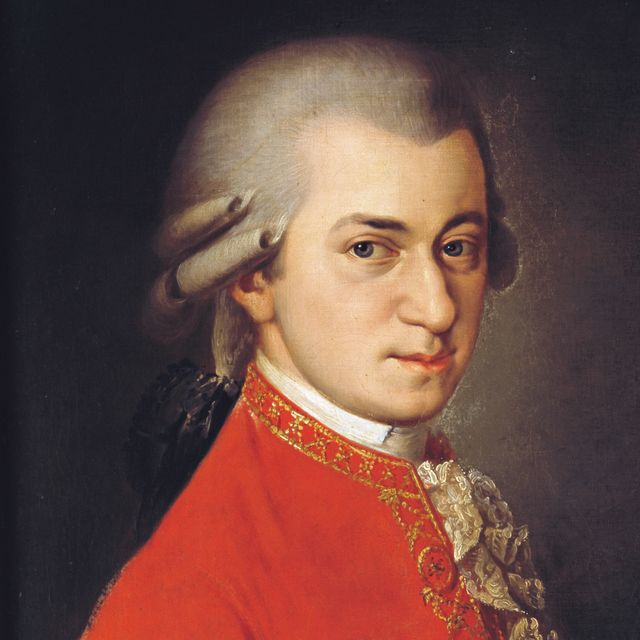
(1756-1791)

Who Was Wolfgang Mozart?
Wolfgang Amadeus Mozart was a musician capable of playing multiple instruments who started playing in public at the age of 6. Over the years, Mozart aligned himself with a variety of European venues and patrons, composing hundreds of works that included sonatas, symphonies, masses, chamber music, concertos and operas, marked by vivid emotion and sophisticated textures.
Central Europe in the mid-18th century was going through a period of transition. The remnants of the Holy Roman Empire had divided into small semi-self-governing principalities. The result was competing rivalries between these municipalities for identity and recognition. Political leadership of small city-states like Salzburg, Vienna, and Prague was in the hands of the aristocracy and their wealth would commission artists and musicians to amuse, inspire, and entertain. The music of the Renaissance and Baroque periods was transitioning toward more full-bodied compositions with complex instrumentation. The small city-state of Salzburg would be the birthplace of one of the most talented and prodigious musical composers of all time.
Born on January 27, 1756, in Salzburg, Austria, Wolfgang Amadeus Mozart’s was the sole-surviving son of Leopold and Maria Pertl Mozart. Leopold was a successful composer, violinist, and assistant concert master at the Salzburg court. Wolfgang’s mother, Anna Maria Pertl, was born to a middle class family of local community leaders. His only sister was Maria Anna (nicknamed “Nannerl”). With their father’s encouragement and guidance, they both were introduced to music at an early age. Leopold started Nannerl on keyboard when she was seven, as three-year old Wolfgang looked on. Mimicking her playing, Wolfgang quickly began to show a strong understanding of chords, tonality, and tempo. Soon, he too was being tutored by his father.
Leopold was a devoted and task-oriented teacher to both his children. He made the lessons fun, but also insisted on a strong work ethic and perfection. Fortunately, both children excelled well in these areas. Recognizing their special talents, Leopold devoted much of his time to their education in music as well as other subjects. Wolfgang soon showed signs of excelling beyond his father’s teachings with an early composition at age five and demonstrating outstanding ability on harpsichord and the violin. He would soon go on to play the piano, organ and viola.
In 1762, Mozart’s father took Nannerl, now age eleven, and Wolfgang, age six to the court of Bavaria in Munich in what was to become the first of several European "tours." The siblings traveled to the courts of Paris, London, The Hague, and Zurich performing as child prodigies. Mozart met a number of accomplished musicians and became familiar with their works. Particularity important was his meeting with Johann Christian Bach (Johann Sebastian Bach's youngest son) in London who had a strong influence on Mozart. The trips were long and often arduous, traveling in primitive conditions and waiting for invitations and reimbursements from the nobility. Frequently, Mozart and other members of his family fell seriously ill and had to limit their performance schedule.
Budding Young Composer
In December 1769, Mozart, then age 13, and his father departed from Salzburg for Italy, leaving his mother and sister at home. It seems that by this time Nannerl’s professional music career was over. She was nearing marriageable age and according to the custom of the time, she was no longer permitted to show her artistic talent in public. The Italian outing was longer than the others (1769-1771) as Leopold wanted to display his son’s abilities as a performer and composer to as many new audiences as possible. While in Rome, Mozart heard Gregorio Allegri’s Miserere performed once in the Sistine Chapel. He wrote out the entire score from memory, returning only to correct a few minor errors. During this time Mozart also wrote a new opera, Mitridate, re di Ponto for the court of Milan. Other commissions followed and in subsequent trips to Italy, Mozart wrote two other operas, Ascanio in Alba (1771) and Lucio Silla (1772).
Mozart and his father returned from their last stay in Italy in March 1773. His father’s benefactor, Archbishop von Schrattenbach had died and was succeeded by Hieronymus von Colleredo. Upon their return, the new archbishop appointed young Mozart as assistant concertmaster with a small salary. During this time, young Mozart had the opportunity to work in several different musical genres composing symphonies, string quartets, sonatas and serenades and a few operas. He developed a passion for violin concertos producing what came to be the only five he wrote. In 1776, he turned his efforts toward piano concertos, culminating in the Piano Concerto Number 9 in E flat major in early 1777. Mozart had just turned 21.
Despite his success with the compositions, Mozart was growing discontent with his position as assistant concert master and the confining environment of Salzburg. He was ambitious and believed he could do more somewhere else. Archbishop von Colloredo was becoming impatient with the young genius’s complaining and immature attitude. In August 1777, Mozart set out on a trip to find more prosperous employment. The archbishop wouldn’t give Leopold permission to travel, so Anna Maria accompanied Wolfgang on his quest to the cities of Mannheim, Paris and Munich. There were several employment positions that initially proved promising, but all eventually fell through. He began to run out of funds and had to pawn several valuable personal items to pay traveling and living expenses. The lowest point of the trip was when his mother fell ill and died on July 3, 1778. After hearing the news of his wife’s death, Leopold negotiated a better post for his son as court organist in Salzburg and Wolfgang returned soon after.
Making it in Vienna
Back in Salzburg in 1779, Mozart produced a series of church works, including the Coronation Mass. He also composed another opera for Munich, Idomeneo in 1781. In March of that year, Mozart was summoned to Vienna by Archbishop von Colloredo, who was attending the accession of Joseph II to the Austrian throne. The Archbishop’s cool reception toward Mozart offended him. He was treated as a mere servant, quartered with the help, and forbidden from performing before the Emperor for a fee equal to half his yearly salary in Salzburg. A quarrel ensued and Mozart offered to resign his post. The Archbishop refused at first, but then relented with an abrupt dismissal and physical removal from the Archbishop’s presence. Mozart decided to settle in Vienna as a freelance performer and composer and for a time lived with friends at the home of Fridolin Weber.
Mozart quickly found work in Vienna, taking on pupils, writing music for publication, and playing in several concerts. He also began writing an opera Die Entführung aus dem Serail (The Abduction from the Seraglio). In the summer of 1781, it was rumored that Mozart was contemplating marriage to Fridolin Weber’s daughter, Constanze. Knowing his father would disapprove of the marriage and the interruption in his career, young Mozart quickly wrote his father denying any idea of marriage. But by December, he was asking for his father’s blessings. While it’s known that Leopold disapproved, what is not known is the discussion between father and son as Leopold’s letters were said to be destroyed by Constanze. However, later correspondence from Mozart indicated that he and his father disagreed considerably on this matter. He was in love with Constanze and the marriage was being strongly encouraged by her mother, so in some sense, he felt committed. The couple was finally married on August 4, 1782. In the meantime, Leopold did finally consent to the marriage. Constanze and Mozart had six children, though only two survived infancy, Karl Thomas and Franz Xaver.
As 1782 turned to 1783, Mozart became enthralled with the work of Bach and George Frederic Handel and this, in turn, resulted in several compositions in the Baroque style and influenced much of his later compositions, such as passages in Die Zauberflote (The Magic Flute) and the finale of Symphony Number 41. During this time, Mozart met Joseph Haydn and the two composers became admiring friends. When Haydn visited Vienna, they sometimes performed impromptu concerts with string quartets. Between 1782 and 1785 Mozart wrote six quartets dedicated to Haydn.
European Fame
The opera Die Entführung enjoyed immediate and continuing success and bolstered Mozart’s name and talent throughout Europe. With the substantial returns from concerts and publishing, he and Constanze enjoyed a lavish lifestyle. They lived in one of the more exclusive apartment buildings of Vienna, sent their son, Karl Thomas, to an expensive boarding school, kept servants, and maintained a busy social life. In 1783, Mozart and Constanze traveled to Salzburg to visit his father and sister. The visit was somewhat cool, as Leopold was still a reluctant father-in-law and Nannerl was a dutiful daughter. But the stay promoted Mozart to begin writing a mass in C Minor, of which only the first two sections, "Kyrie" and "Gloria," were completed. In 1784, Mozart became a Freemason, a fraternal order focused on charitable work, moral uprightness, and the development of fraternal friendship. Mozart was well regarded in the Freemason community, attending meetings and being involved in various functions. Freemasonry also became a strong influence in Mozart’s music.
From 1782 to 1785, Mozart divided his time between self-produced concerts as soloist, presenting three to four new piano concertos in each season. Theater space for rent in Vienna was sometimes hard to come by, so Mozart booked himself in unconventional venues such as large rooms in apartment buildings and ballrooms of expensive restaurants. The year 1784, proved the most prolific in Mozart’s performance life. During one five-week period, he appeared in 22 concerts, including five he produced and performed as the soloist. In a typical concert, he would play a selection of existing and improvisational pieces and his various piano concertos. Other times he would conduct performances of his symphonies. The concerts were very well attended as Mozart enjoyed a unique connection with his audiences who were, in the words of Mozart biographer Maynard Solomon, “given the opportunity of witnessing the transformation and perfection of a major musical genre.” During this time, Mozart also began to keep a catalog of his own music, perhaps indicating an awareness of his place in musical history.
By the mid-1780s, Wolfgang and Constanze Mozart’s extravagant lifestyle was beginning to take its toll. Despite his success as a pianist and composer, Mozart was falling into serious financial difficulties. Mozart associated himself with aristocratic Europeans and felt he should live like one. He figured that the best way to attain a more stable and lucrative income would be through court appointment. However, this wouldn’t be easy with the court’s musical preference bent toward Italian composers and the influence of Kapellmeister Antonio Salieri. Mozart’s relationship with Salieri has been the subject of speculation and legend. Letters written between Mozart and his father, Leopold, indicate that the two felt a rivalry for and mistrust of the Italian musicians in general and Salieri in particular. Decades after Mozart’s death, rumors spread that Salieri had poisoned him. This rumor was made famous in 20th-century playwright Peter Shaffer’s Amadeus and in the 1984 film of the same name by director Milos Foreman. But in truth, there is no basis for this speculation. Though both composers were often in contention for the same job and public attention, there is little evidence that their relationship was anything beyond a typical professional rivalry. Both admired each other’s work and at one point even collaborated on a cantata for voice and piano called Per la recuperate salute di Ophelia.
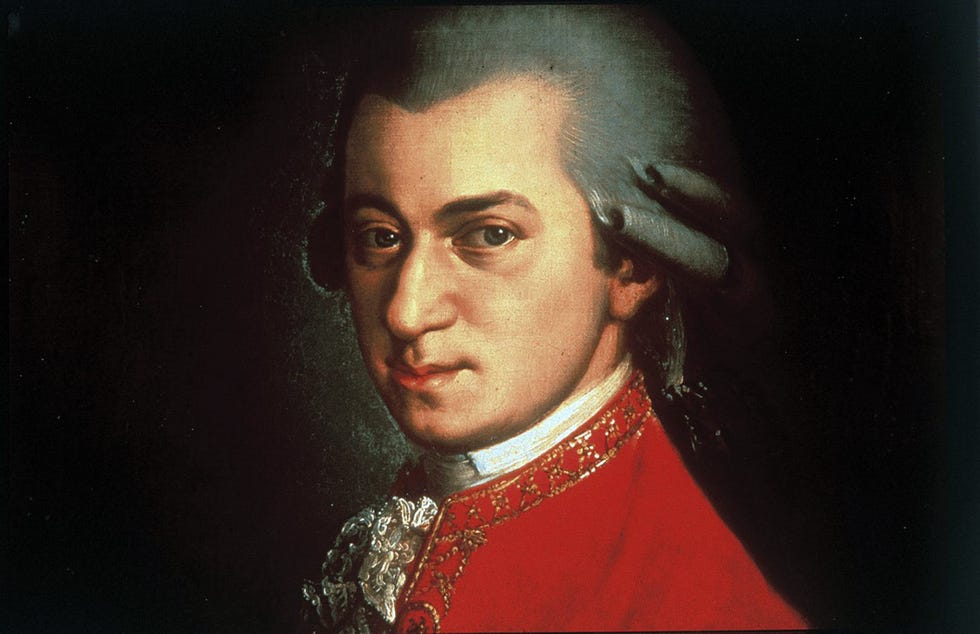
Toward the end of 1785, Mozart met the librettist Lorenzo Da Ponte, a Venetian composer and poet and together they collaborated on the opera The Marriage of Figaro . It received a successful premiere in Vienna in 1786 and was even more warmly received in Prague later that year. This triumph led to a second collaboration with Da Ponte on the opera Don Giovanni which premiered in 1787 to high acclaim in Prague. Noted for their musical complexity, the two operas are among Mozart’s most important works and are mainstays in operatic repertoire today. Both compositions feature the wicked nobleman, though Figaro is presented more in comedy and portrays strong social tension. Perhaps the central achievement of both operas lies in their ensembles with their close link between music and dramatic meaning.
Later Years
In December 1787, Emperor Joseph II appointed Mozart as his "chamber composer," a post that had opened up with the death of Gluck. The gesture was as much an honor bestowed on Mozart as it was an incentive to keep the esteemed composer from leaving Vienna for greener pastures. It was a part-time appointment with low pay, but it required Mozart only to compose dances for the annual balls. The modest income was a welcome windfall for Mozart, who was struggling with debt, and provided him the freedom to explore more of his personal musical ambitions.
Toward the end of the 1780s, Mozart’s fortunes began to grow worse. He was performing less and his income shrank. Austria was at war and both the affluence of the nation and the ability of the aristocracy to support the arts had declined. By mid-1788, Mozart moved his family from central Vienna to the suburb of Alsergrund, for what would seem to be a way of reducing living costs. But in reality, his family expenses remained high and the new dwelling only provided more room. Mozart began to borrow money from friends, though he was almost always able to promptly repay when a commission or concert came his way. During this time he wrote his last three symphonies and the last of the three Da Ponte operas, Cosi Fan Tutte , which premiered in 1790. During this time, Mozart ventured long distances from Vienna to Leipzig, Berlin, and Frankfurt, and other German cities hoping to revive his once great success and the family’s financial situation but did neither. The two-year period of 1788-1789 was a low point for Mozart, experiencing in his own words "black thoughts" and deep depression. Historians believe he may have had some form of bipolar disorder, which might explain the periods of hysteria coupled with spells of hectic creativity.
Between 1790 and 1791, now in his mid-thirties, Mozart went through a period of great music productivity and personal healing. Some of his most admired works -- the opera The Magic Flute , the final piano concerto in B-flat, the Clarinet Concerto in A major, and the unfinished Requiem to name a few -- were written during this time. Mozart was able to revive much of his public notoriety with repeated performances of his works. His financial situation began to improve as wealthy patrons in Hungary and Amsterdam pledged annuities in return for occasional compositions. From this turn of fortune, he was able to pay off many of his debts.
However, during this time both Wolfgang Amadeus Mozart’s mental and physical health was deteriorating. In September 1791, he was in Prague for the premiere of the opera La Clemenza di Tito , which he was commissioned to produce for the coronation of Leopold II as King of Bohemia. Mozart recovered briefly to conduct the Prague premiere of The Magic Flute , but fell deeper into illness in November and was confined to bed. Constanze and her sister Sophie came to his side to help nurse him back to health, but Mozart was mentally preoccupied with finishing Requiem, and their efforts were in vain.
Death and Legacy
Mozart died on December 5, 1791, at age 35. The cause of death is uncertain, due to the limits of postmortem diagnosis. Officially, the record lists the cause as severe miliary fever, referring to a skin rash that looks like millet seeds. Since then, many hypotheses have circulated regarding Mozart's death. Some have attributed it to rheumatic fever, a disease he suffered from repeatedly throughout his life. It was reported that his funeral drew few mourners and he was buried in a common grave. Both actions were the Viennese custom at the time, for only aristocrats and nobility enjoyed public mourning and were allowed to be buried in marked graves. However, his memorial services and concerts in Vienna and Prague were well attended. After his death, Constanze sold many of his unpublished manuscripts to undoubtedly pay off the family’s large debts. She was able to obtain a pension from the emperor and organized several profitable memorial concerts in Mozart’s honor. From these efforts, Constanze was able to gain some financial security for herself and allowing her to send her children to private schools.
Mozart’s death came at a young age, even for the time period. Yet his meteoric rise to fame and accomplishment at a very early age is reminiscent of more contemporary musical artists whose star had burned out way too soon. At the time of his death, Mozart was considered one of the greatest composers of all time. His music presented a bold expression, oftentimes complex and dissonant, and required high technical mastery from the musicians who performed it. His works remained secure and popular throughout the 19th century, as biographies about him were written and his music enjoyed constant performances and renditions by other musicians. His work influenced many composers that followed -- most notably Beethoven. Along with his friend Joseph Haydn, Mozart conceived and perfected the grand forms of symphony, opera, string ensemble, and concerto that marked the classical period. In particular, his operas display an uncanny psychological insight, unique to music at the time, and continue to exert a particular fascination for musicians and music lovers today.
Ludwig van Beethoven
"],["
Johann Sebastian Bach
Franz Joseph Haydn
Frédéric Chopin
George Frideric Handel
"]]" tml-render-layout="inline">
QUICK FACTS
- Name: Wolfgang Mozart
- Birth Year: 1756
- Birth date: January 27, 1756
- Birth City: Salzburg
- Birth Country: Austria
- Gender: Male
- Best Known For: A prolific artist, Austrian composer Wolfgang Mozart created a string of operas, concertos, symphonies and sonatas that profoundly shaped classical music.
- Astrological Sign: Aquarius
- Nacionalities
- Death Year: 1791
- Death date: December 5, 1791
- Death City: Vienna
- Death Country: Austria
We strive for accuracy and fairness.If you see something that doesn't look right, contact us !
CITATION INFORMATION
- Article Title: Wolfgang Mozart Biography
- Author: Biography.com Editors
- Website Name: The Biography.com website
- Url: https://www.biography.com/musicians/wolfgang-mozart
- Access Date:
- Publisher: A&E; Television Networks
- Last Updated: September 16, 2022
- Original Published Date: April 3, 2014
- Love, love, love—that is the soul of genius.

Classical Musicians

Maria Callas
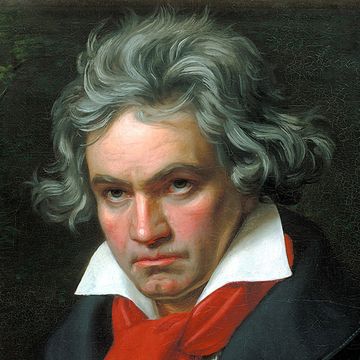
Leonard Bernstein

The True Story of Leonard Bernstein’s Marriage
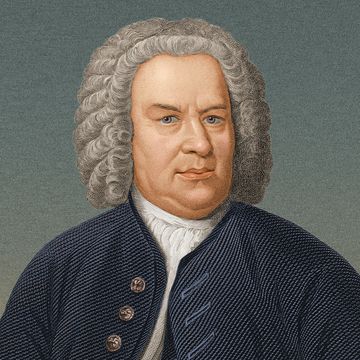
Richard Rodgers
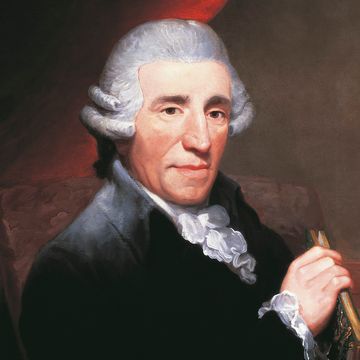
Luciano Pavarotti

Pyotr Ilyich Tchaikovsky

Hector Berlioz
- Our Insiders
- Choral & Song
- Instrumental
- Great Recordings
- Musical terms
- TV and Film music
- Instruments
- Audio Equipment
- Free Download
- Listen to Radio 3
- Subscriber FAQ
- 2023 Awards
- 2024 Awards
Mozart: child prodigy, melodic genius, Romantic forerunner... and our greatest composer?
Was Johannes Chrysostomus Wolfgangus Theophilus Mozart the greatest composer who ever lived?
Universal History Archive/Getty Images
Chris de Souza
Read on for our brief guide to the life and work of the composer Wolfgang Amadeus Mozart, one of the most gifted composers of his or any other era.
Who was Mozart?
Mozart was a great composer: one of the very greatest composers , in fact. And, before that, he was a child prodigy . From the age of seven, Mozart spent much of his childhood on tour, paraded by his father before potential patrons, academics and professional musicians.
When was Mozart born?
Johannes Chrysostomus Wolfgangus Theophilus Mozart, to give him his full and rather impressive name, was born on 27 January 1756, in the Austrian city of Salzburg.
- The greatest Austrian composers of all time
Where did Mozart grow up?
Mozart grew up in Salzburg, where his father Leopold worked as a composer, violinist and theorist.
The young prodigy
It became apparent early on that the young Wolfgang was that rare thing: a musical prodigy. His father, Leopold Mozart, referred to him as 'the miracle that God allowed to be born in Salzburg.'
This talent first surfaced on January 24, 1761, when young Wolfgang, just days away from turning five, surprised his family. Though he'd never played a piece before, he sat at the harpsichord and, within half an hour, mastered and memorised a minuet that his sister Nannerl had been practising.
Nannerl, it's worth noting, also showed prodigious talent. But Wolfgang was operating on a different level entirely. He soon started composing his own music, which rapidly grew in complexity and scale. By the age of eight, he had already written symphonies for full orchestras. Although Leopold played a significant role in guiding and refining his work, the brilliance of the music clearly originated from the young boy.
At this stage, Leopold devised an extraordinary plan: to showcase his children's talents across Europe. A violinist, composer, and educator known for his acclaimed violin method, Leopold also had a keen sense for strategy and orchestration - both musically and logistically.
An exhausting, globe-trotting childhood
Between June 1763, five months after his seventh birthday, and November 1766, the Mozart family visited no less than ten German cities, as well as Brussels, Paris (where they dined with Louis XV at Versailles) and London.
After a year in England, they returned home via Holland, Paris and Switzerland to Salzburg. But they would not stop for long. After barely a year at home, they returned to the road again, this time journeying to Vienna (where both children caught smallpox), Olomouc and Brno, returning home in January 1769. Mozart was just 13 years old. But he was already writing complex music - the Symphony No. 8 dates from around this time.
Not much of a childhood, really: a non-existent home life; constantly writing or performing in different places; threatened with, and as often as not, succumbing to illness; constantly on display; always in the company of adults. But what did it do for Mozart and his music?
- 10 Mozart myths debunked: from being buried in a pauper's grave to a penchant for wearing brightly coloured wigs
Before setting off on his first tour, Mozart had already laid the firm foundations of his technique, learning from the collections of more than 100 keyboard works, mostly by North German composers such as Telemann and CPE Bach , that his father had gathered for him and his sister, Nannerl, to study.
Mozart and JC Bach
It’s no surprise, then, that Mozart’s earliest works show their influence and North German seriousness would become an important feature of his mature style, such as in the slow movement of his Sinfonia Concertante for violin, viola and orchestra (1779) – an unquestionable masterpiece of the classical canon.
- Mozart Sinfonia Concertante: a guide to this beautiful work and its best recordings
But it was during his visit to London that the eight-year-old Mozart met Johann Sebastian Bach ’s youngest son Johann Christian Bach , with whom he would form a life-long friendship.
- Elusive Mozart manuscript discovered
JC Bach had spent much of his earlier life in Italy, mastering the Italian style, and had since established himself in London with a successful series of concerts at the fashionable Vauxhall Gardens. His Italianate style made a profound impact on Mozart who modelled his first three symphonies on those of Bach and his business-partner, Carl Friedrich Abel.
Mozart also arranged three of Bach’s Op. 5 keyboard sonatas as Piano Concertos (KV107). Indeed, Bach’s ‘singing allegros ’ can be heard in many of Mozart’s most characteristic first movements and finales, most triumphantly in the finale of the Jupiter Symphony No. 41 (1788).
- We named the Jupiter Symphony one of the greatest symphonies of all time
Mozart and Italy
By the age of 13, the young Mozart had already composed a little one-act opera, Bastien and Bastienne , modelled on the sort of French comic operas he had heard in Paris. It was the seed from which Mozart grew his ambition to create German opera, later realised with Die Entführung aus dem Serail (1782) and Die Zauberflöte ( The Magic Flute , 1791).
To hone his operatic skills and establish his reputation, Mozart visited Italy three times between 1769 and 1773. He performed in Rovereto, Verona, Mantua and Milan, where he met composer Niccolò Piccinni and was commissioned to write his opera seria, Mitridate .
- 10 Mozart works you might not know
- The mystery of Mozart's Requiem
From Milan, Mozart journeyed to Lodi where he produced his first string quartet . Then came Parma, Bologna and Florence, where the emerging composer became friendly with just about the only child he ever had dealings with as an equal – the English composer Thomas Linley the Younger.
For Easter, Mozart was in Rome, where he famously broke the Papal decree against publishing Allegri’s Miserere by memorising it after hearing it at St Peter’s and later writing it down.
Further travels
In May, Mozart visited Naples where he met composer Niccolò Jommelli and the English historian, Charles Burney. Returning via Rome, where he was knighted by the Pope, he visited Bologna, taking lessons from the great contrapuntist, Father Martini.
The lessons proved beneficial. After passing a gruelling test in counterpoint, Mozart was elected a member of the prestigious Philharmonic Society. His style would combine contrapuntal rigour with Italian suavity, to be exploited as and when occasion demanded: for church, stage or concert hall.
Mozart’s first tour of Italy had been an outstanding success. France, to which he and his mother journeyed in September 1777, was an unmitigated disaster. Indeed, the summer of ’78 in Paris proved to be one of the saddest in Mozart’s short life. The young composer was forced to fend for himself when his mother died.
- 15 weird and wonderful uses for Mozart
Neither a businessman, nor any longer a child prodigy, he struggled to survive.
Of the few commissions that came his way, some were unpaid, others unperformed.
The move to Vienna
In recompense for non-performance of a Sinfonia Concertante for four wind instruments and orchestra, however, he received a commission for a Symphony (No. 31, also known as the 'Paris' Symphony) – his one success.
'It will please the few intelligent French people present'
Embittered and frustrated, he wrote to his father: ‘Whether it will please, I do not know, and to tell the truth I care very little. I guarantee that it will please the few intelligent French people present... as for the stupid ones – I see no great misfortune in not pleasing them…’
After returning home, it was not long before Mozart moved to Vienna, married and cut down on his travels. Still, in the last ten years of his life he seemed restless and continued to move from house to house.
Could it be that, raised against a backdrop of ever-changing scenery, Mozart perhaps needed disruption in order to compose? Certainly there is an identifiable sense of restlessness in his music. The modulations in the development of the Jupiter Symphony (No. 41), for example, that give rise to changing moods, shifting like the shadows of clouds across its musical landscape. In this sense, Mozart’s music not only speaks of the joys of existence, but also of the impossibility of peace.
What are Mozart's most famous pieces?
Mozart composed across a relatively large span of musical forms and ensembles. His best known works include the later Piano Concertos - particularly those from 19 to 25. These are absolute, unquestioned masterpieces of the concerto form. Most of them are largely serene works, complete with moments of almost transcendental beauty - the slow movements of numbers 21 and 23, for example, in Andante and Adagio tempi respectively.
- Tempo: a guide to one of music's most essential elements
Two, however - numbers 20 and 24 - are composed in minor keys. These two have much more of a sense of drama about them. The stormy, passionate Piano Concerto No. 24, in particular, can be seen as an early outlier of the coming Romantic movement, of which more shortly.
- The best recordings of Mozart's Piano Concertos
Staying in the orchestral world, Mozart's later symphonies (roughly from number 35, 'Haffner' onwards) are also masterpieces of their form. These late works combine intense melodic beauty, drama and often a sheer sense of joy in the possibilities opened up by music.
Most famous of all are the last two. Number 40 has that taut, dramatic first movement built, like Beethoven's Fifth Symphony , upon a single, rhythmical and insistent motif. The final Mozart symphony, Number 41 'Jupiter', has an extraordinary fugal Finale. No fewer than six different themes are interwoven, producing a sense of astonishing beauty, exuberance and joy.
What are Mozart's best operas?
But we can't stop there. Other justly famous and much-loved Mozart works include his operas Le Nozze di Figaro ( The Marriage of Figaro ) , Don Giovanni and Die Zauberflöte ( The Magic Flute ), which features some of the most colourful characters in opera (and that's saying something), including Papageno the bird-catcher and the fantastically evil Queen of the Night.
- The 20 Greatest Operas of all time
- Best operas for beginners: 5 operas newbies can't help being enthralled by
Then there is the stirring Requiem , with its contrapuntal elements that hark back to Bach and Handel . There are the beautiful Mozart Clarinet Concerto and Sinfonia Concertante (for violin and viola ). Then there is some gorgeous chamber music such as the Clarinet Quintet and 'Hunt' and 'Dissonance' String Quartets. There really is so much wonderful Mozart to discover.
Mozart: the first Romantic composer?
Mozart died in 1791, just before (many would argue) the beginning of Romanticism in music, in around 1800 or shortly after. But can we already find early intimations of this exciting, passionate and individualistic musical movement in Mozart's often passionate music?
One answer can come from the writer ETA Hoffmann, who helped to define Romanticism in music, particularly as embodied by his hero Beethoven whose music, Hoffmann claimed, ' ideal of music, as seen in his description of his prime musical hero: ‘Beethoven’s instrumental music 'opens up for us the realm of the monstrous and the immeasurable.'
Hoffmann pointed to Mozart as the first true Romantic composer, citing his portrayal of Don Giovanni, that demonic anti-hero and sexual force of nature who, so very dramatically, descends into Hell.
He probably didn't sense his own musical immortality in the way that Beethoven did
We shouldn't overstress Mozart's role in ushering in Romanticism, however. The Romantic ideal of art has the artist as a sensitive, suffering genius, an almost god-like figure. In this way, Berlioz , Beethoven and Chopin ; Liszt , Schumann and Tchaikovsky: they all fit the Romantic hero perfectly. Mozart not so much.
- Is genius overrated? Why genius composers need ordinary 'second-rankers' in order to thrive
- How Liszt invented the piano recital and became a 19th-century pin-up
For example, Mozart probably didn't have any sense of his own musical immortality in the way that Beethoven definitely did. Mozart was still writing at a time when, by and large, composers wrote for the time in which they lived, and assumed that their music would not survive them. Most music being performed was new music. The first composer to achieve some sort of renown beyond his own lifetime was probably Handel, who died when Mozart was three years old.
Beethoven, though, was the first composer to break this mould - to perceive that his music might outlive him, might, in fact, become part of a longer continuum, a permanent musical repertoire. He used the word ‘immortal’ in regard to his ambitions, and wrote for a wider humanity. Mozart is not known to have spoken about how his music might survive after his death: instead, he wrote for the audiences at his soirées and concerts, for churches and theatres.
It's a nuanced argument though, because - again - works like the Piano Concerto No. 24, Don Giovanni , and the tense, relentless and hugely powerful Symphony No. 40 certainly have something Romantic in their impact, minor-key introspection, and probing insights into the recesses of the human psyche.
Who did Mozart marry?
In 1782 Mozart married Constanze Weber. She was the third daughter of the Weber family with whom he had found lodgings in Vienna. The couple had six children, although sadly only two of them lived beyond infancy. After Mozart's death in 1791 Constanze, aged just 29, had to bring up her young family alone.
When did Mozart die?
Mozart died on 5 December 1791, at the age of just 35.
What illness did Mozart die of?
The cause of his death is not known for certain. It may well have been from a condition known as Schönlein-Henoch purpura.
Did Mozart and Beethoven meet?
The young Ludwig van Beethoven intended to study with Mozart. In 1787, aged 16, Beethoven travelled to Vienna to meet his (31-year-old) would-be mentor. The two composers did manage a meeting. However, shortly after his arrival in Vienna, Beethoven's mother fell ill. The young Beethoven had to return to his hometown of Bonn in Germany.
Beethoven stayed in Bonn for five years, looking after his younger siblings. When he was finally able to undertake the trip to Vienna the great Mozart was, sadly, dead.
What is the best film about Mozart?
That would be the 1984 biopic Amadeus . Adapted by Peter Shaffer from his 1979 stage play, it's directed by Miloš Forman. It may not be the most faithful historical account - the composer Salieri is portrayed as Mozart's bitter rival, whereas in reality they were more likely on friendly, or at least mutually respectful terms. It is, however, a totally gripping experience. Tom Hulce and F. Murray Abraham are both captivating as Mozart and Salieri respectively, and we get a real sense of the young Mozart's somewhat anarchic but revelatory genius. It's undoubtedly one of the best films about composers that you will ever watch.
Are there any good books about Mozart?
Yes, there are plenty of good books about the composer. See our article on the best books about Mozart for more information.
Chris de Souza, Jan Swafford and Steve Wright
Share this article

- Privacy policy
- Terms & Conditions
- Cookies policy
- Manage preferences
Biography Online

Mozart Biography
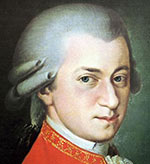
“Music is my life and my life is music. Anyone who does not understand this is not worthy of God.”
– Wolfgang Amadeus Mozart.
Short Biography of Mozart
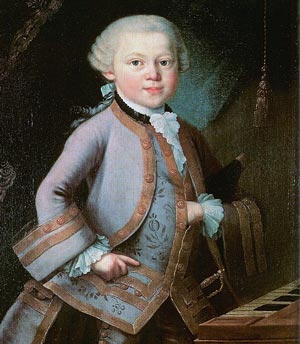
His father Leopold, who was also a musician, was quick to see the talent of his young son and became a formidable publicist in showing off his son’s capacities. During his childhood, Mozart was a frequent guest at various palaces around Europe, playing for distinguished guests. In addition to being feted by aristocrats across, Europe, Leopold raised his children as strict Catholics. This included attendance at mass, frequent confession and the veneration of saints. Mozart remained a committed Catholic throughout his life.
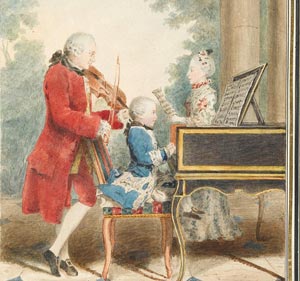
Mozart family on tour
Dressed in the finest clothes, the child-genius Mozart left an indelible impression on everyone he met. One of the pre-eminent composers of the day Johann Hasse remarked: “He has done things which for such as age are really incomprehensible; they would be astonishing in an adult.”
Aged 17, he accepted a post as a court musician in Salzburg; although this did not suit him very well. He chaffed at the lack of independence from his patron Prince-Archbishop Hieronymus Colloredo (the ruler of Salzburg). Mozart was also indignant at his meagre salary (150 florins a year) which left Mozart feeling unappreciated. Yet, despite dissatisfaction and getting involved in rows, the next few years were a time of prolific composition. In 1777, he grew tired of the demands placed on him by his patron and negotiated the release from his contract. He left Salzburg and after travelling to Paris and Germany, he moved permanently to Vienna, Austria where he lived for the remainder of his life.
Initially, Mozart worked for Archbishop Colloredo, but again Mozart felt constrained by the unreasonable demands and limitations placed on him by the Archbishop. For example, the Archbishop sought to prevent Mozart from playing in public concerts. Mozart became angry at these restrictions and confronted the archbishop. Eventually, he was released from his contact with a ‘literal kick up the backside.’ It was a difficult decision because his father sided with the archbishop and felt his son should seek to reconcile with the archbishop. Some biographers see this as an important moment in Mozart’s life as – in a very clear way – Mozart asserted his musical independence even at the cost of his relationship with his father and his financial security.
In Vienna, he became well known and was often in demand as a composer and performer. His dazzling and innovative new compositions were generally admired, although, like many genii, he was ahead of his time. Some criticised his symphonies for being too complicated, however, he received the very sincere praise of all the great composers of the era. Schubert said of Mozart:
“O Mozart! immortal Mozart! What countless impressions of a brighter, better life hast thou stamped upon our souls!”
On a personal level, his strained relationship with his domineering father left Mozart often seeking outer recognition. However, in the realm of music, Mozart was in his own world, he was not constrained by the petty misunderstandings and expectations of society.
“I pay no attention whatever to anybody’s praise or blame. I simply follow my own feelings.”
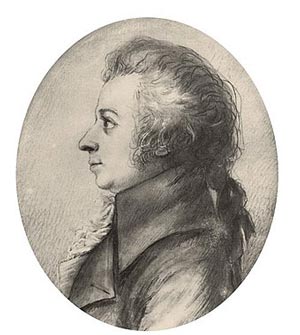
Drawing of Mozart by Dora Stock, Dresden, April 1789
However, despite his relative fame, he struggled to manage his finances and moved between periods of poverty and prosperity. A trait of Mozart’s character was that he could be frivolous with money; he enjoyed spending on fancy clothes – as soon as he received money he could spend it and he was frequently in debt. Another aspect of Mozart’s character was a playfulness and high-spirits, which could also appear like childishness. He enjoyed pranks and a rough sense of humour, and his care-free attitude could get him into difficulties with the more serious-minded court officials. Yet, Mozart was a man of great contrast and counterpoint. The one moment he could be making a crude joke, the next he could be composing the most sublime and divine music.
Personal life
In 1782, he married Constanze – against the wishes of his father. He remained very close to her for the rest of his life and was very much in love. They had six children but only two survived infancy. Whilst he got closer to Constanze, his relationship with his father deteriorated. His father had been domineering since his childhood, and Mozart increasingly resented his presence.

Early fortepiano played by Mozart
His financial difficulties were enhanced in 1786 when Austria was involved in a war which led to lower demand for musicians. Mozart wrote many letters begging for support from patrons, friends and fellow freemasons. He received only scattered support and supplemented his income by teaching and performing his works.
Death and requiem
In the last year of his life, he began composing one of his greatest works – The Requiem. Mozart died before he could finish. Reasons for his death are not clear. The most likely is a sudden illness – possibly the plague or possibly a combination of rheumatoid arthritis and pneumonia. One legend is that he was poisoned by a jealous rival composer Salieri, but this theory is discredited..
His last major work the Requiem was commissioned by Count Franz von Walsegg for his wife who past away. Walsegg may have tried to pass it off as his own work, but a public benefit concert for Constanze frustrated his aim. Many took the Requiem to be autobiographical and written by Mozart for his own life.
Mozart was near bankrupt when he died and he was given a modest burial of a citizen. It was not a pauper’s grave as sometimes claimed. But, in those days, 10 years after burial a citizens grave could be dug up and re-used.
The music of Mozart
The work of Mozart is epic in scope and proportion. There were few branches of music Mozart did not touch. He composed operas, symphonies, concertos, and solo pieces for the piano. His work spanned from joyful light-hearted pieces to powerful, challenging compositions which touched the emotions. At the beginning of his career, Mozart had a powerful ability to learn and remember from the music he heard from others. He was able to incorporate the style and music of people such as Haydn and J.S. Bach. As he matured, he developed his very own style and interpretations. In turn, the music of Mozart very much influenced the early Beethoven .
Mozart was brought up a Roman Catholic and remained a member of the church throughout his life.
“I know myself, and I have such a sense of religion that I shall never do anything which I would not do before the whole world.”
Some of his greatest works are religious in nature such as Ave Verum Corpus and the final Requiem .
Mozart was very productive until his untimely death in 1791, aged 35.
“I never lie down at night without reflecting that young as I am I may not live to see another day.”
In the last year of his life, he composed the opera The Magic Flute , the final piano concerto (K. 595 in B-flat), the Clarinet Concerto K. 622, a string quintet (K. 614 in E-flat), the famous motet Ave Verum Corpus K. 618, and the unfinished Requiem K. 626.
Citation: Pettinger, Tejvan . “Biography of Mozart”, Oxford, UK. www.biographyonline.net , Last updated 3 March 2020. Originally published 28th May 2008.
More interesting facts about the life of Mozart
Mozart – 100 Classical Masterpieces
Mozart – 100 Classical Masterpieces at Amazon
Mozart: A Life

Mozart: A Life at Amazon
Related pages
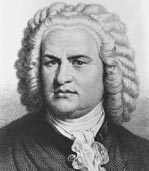

Biography of Mozart
Family and early years.
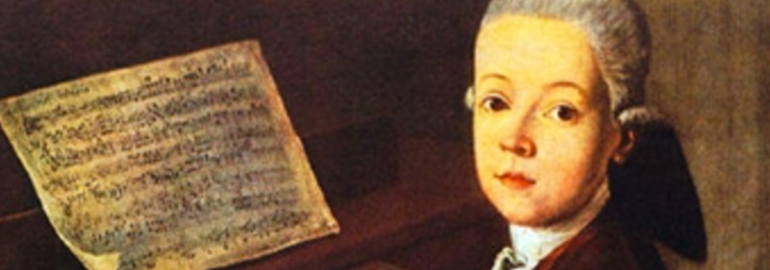
Wolfgang Amadeus Mozart was born to Leopold and Anna Maria Pertl Mozart in Getreidegasse 9 in the city of Salzburg, the capital of the sovereign Archbishopric of Salzburg, in what is now Austria, then part of the Holy Roman Empire. His only sibling who survived past birth was an older sister: Maria Anna, nicknamed Nannerl. Mozart was baptized the day after his birth at St. Rupert's Cathedral. The baptismal record gives his name in Latinized form as Joannes Chrysostomus Wolfgangus Theophilus Mozart. Mozart generally called himself "Wolfgang Amadé Mozart"as an adult, but there were many variants.
Baptsismal Record
Mozart was baptized January 28, 1756, the day after his birth, at St. Rupert's Cathedral in Salzburg as Joannes Chrysostomus Wolfgangus Theophilus Mozart. The baptismal register of the cathedral parish contains the entry shown below, written down in Latin by city chaplain Leopold Lamprecht. The parallel five-column format of the original document, seen in the figure, is transcribed below in five consecutive paragraphs. Material in brackets represents editorial additions by Otto Erich Deutsch (see below), intended for clarification.
Mozart's father Leopold Mozart (1719–1787) was one of Europe's leading musical teachers. His influential textbook Versuch einer gründlichen Violinschule, was published in 1756, the year of Mozart's birth (English, as "A Treatise on the Fundamental Principles of Violin Playing", transl. E.Knocker; Oxford-New York, 1948). He was deputy Kapellmeister to the court orchestra of the Archbishop of Salzburg, and a prolific and successful composer of instrumental music. Leopold gave up composing when his son's outstanding musical talents became evident.[citation needed] They first came to light when Wolfgang was about three years old, and Leopold, proud of Wolfgang's achievements, gave him intensive musical training, including instruction in clavier, violin, and organ. Leopold was Wolfgang's only teacher in his earliest years. A note by Leopold in Nannerl's music book – the Nannerl Notenbuch – records that little Wolfgang had learned several of the pieces at the age of four. Mozart's first compositions, a small Andante (K. 1a) and Allegro (K. 1b), were written in 1761, when he was five years old.
1762-1773: Years of travel
During Mozart's formative years, his family made several European journeys in which the children were exhibited as child prodigies. These began with an exhibition in 1762 at the Court of the Elector of Bavaria in Munich, then in the same year at the Imperial Court in Vienna and Prague. A long concert tour spanning three and a half years followed, taking the family to the courts of Munich, Mannheim, Paris, London, The Hague, again to Paris, and back home via Zürich, Donaueschingen, and Munich. During this trip Mozart met a great number of musicians and acquainted himself with the works of other composers. A particularly important influence was Johann Christian Bach, who met Mozart in London in 1764–65. Bach's work is often taken to be an inspiration for Mozart's music. The family again went to Vienna in late 1767 and remained there until December 1768. On this trip Mozart contracted smallpox, and his healing was believed by Leopold as proof of God's plans concerning the child.[citation needed]
After one year in Salzburg, three trips to Italy followed, this time with just Leopold, leaving Wolfgang's mother and sister at home. These took place from December 1769 to March 1771, from August to December 1771, and from October 1772 to March 1773. The first trip resembled the earlier journeys, with the purpose of displaying the now-teenaged Mozart's abilities as a performer and as a rapidly maturing composer. Mozart met G.B. Martini in Bologna, and was accepted as a member of the famous Accademia Filarmonica. In Rome he heard Gregorio Allegri's Miserere once in performance in the Sistine Chapel then wrote it out in its entirety from memory, only returning to correct minor errors; thus producing the first illegal copy of this closely-guarded property of the Vatican.
In Milan Mozart wrote an opera Mitridate Rè di Ponto (1770), performed with success. This lead to further opera commissions, and Wolfgang and Leopold returned twice from Salzburg to Milan for the composition and premieres of Ascanio in Alba (1771) and Lucio Silla (1772).
Toward the end of the final Italian journey Mozart wrote the first of his works that is still widely performed today, the solo cantata "Exsultate, jubilate", K. 165.
1773-1777: The Salzburg Court
Following his final return with his father from Italy (13 March 1773), Mozart was employed as a court musician by the ruler of Salzburg Prince-Archbishop Hieronymus Colloredo. Mozart was a "favorite son" in Salzburg, where he had a great number of friends and admirers, and he had the opportunity to compose in a great number of genres, including symphonies, sonatas, string quartets, serenades, and the occasional opera. Some of the works he produced during this early period are very widely performed today. For instance, during the period between April and December of 1775, Mozart developed an enthusiasm for violin concertos, producing a series of five (the only ones he ever wrote), steadily increasing in their musical sophistication. The last three (K. 216, K. 218, K. 219) are now staples of the repertoire. The E flat piano concerto K. 271 (1777), with its surprising interruption of the orchestra by the soloist at the start, is considered by critics to be a breakthrough work.
Nevertheless, Mozart gradually grew more discontented with Salzburg and made increasingly strenuous efforts to find a position elsewhere. The reason seems to be in part his low salary, 150 florins per year (Leopold, the vice-Kapellmeister, made 250).[6] In addition, Mozart loved to compose operas, and Salzburg provided at best rare occasions for opera productions. The situation became worse in 1775 when the court theater was closed, and the other theater in Salzburg was largely reserved for visiting troupes.[7]
Two long job-hunting expeditions interrupted this long Salzburg stay: Wolfgang and Leopold (they were both looking) visited Vienna from 14 July to 26 September 1773 and Munich from 6 December 1774 to March 1775. Neither visit was successful, though the Munich journey resulted in a popular success with the premiere of Mozart's opera La finta giardiniera[8]
1777-1778: The Paris Journey
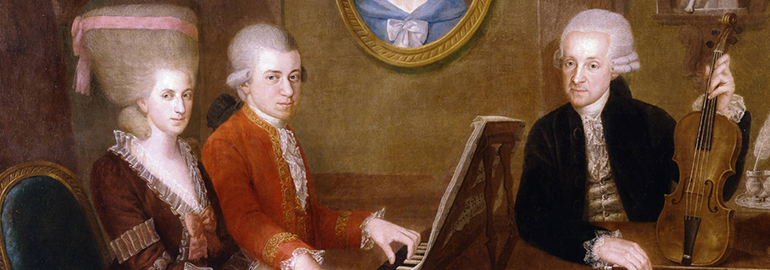
On September 23, 1777, Mozart began yet another job-hunting tour, this time accompanied by his mother Anna Maria. The visit included Munich, Mannheim, and Paris. In Mannheim he became acquainted with members of the Mannheim orchestra, the best in Europe at the time. He also fell in love with Aloysia Weber, one of four daughters in a musical family. Mozart moved on to Paris and attempted to build his career there, but was unsuccessful (he did obtain a job offer as organist at Versailles, but it was a job he did not want). The visit to Paris was an especially unhappy one because Mozart's mother took ill and died there, June 23, 1778. On his way back to Salzburg Mozart passed through Munich again, where Aloysia, now employed at the opera there as a singer, indicated she was no longer interested in him.
Mozart's discontent with Salzburg continued after his return. The question arises why Mozart, despite his talent, was unable to find a job on this trip. Maynard Solomon has suggested that the problem lay in conflict with father Leopold, who insisted that Mozart find a high-level position that would support the entire family. Wolfgang favored the alternative strategy of settling in a major city, working as a freelance, and cultivating the aristocracy to the point that he would be favored for an important job; this had worked earlier for other musicians such as Haydn. The plan Leopold imposed, coupled with Mozart's youth (he was only 21 when he left Salzburg), seems to have had foreordained failure.

1781: The move to Vienna
In January 1781, Mozart's opera Idomeneo, premiered with "considerable success" (New Grove) in Munich. The following March, the composer was summoned to Vienna, where his employer, Prince-Archbishop Colloredo of Salzburg, was attending the celebrations for the installation of the Emperor Joseph II. Mozart, who had just experienced success in Munich, was offended when Colloredo treated him as a mere servant, and particularly when the Archbishop forbade him to perform before the Emperor at Countess Thun's (for a fee that would have been fully half of his Salzburg salary). In May the resulting quarrel intensified: Mozart attempted to resign, and was refused. The following month, however, the delayed permission was granted, but a grossly insulting way: Mozart was dismissed literally "with a kick in the arse", administered by the Archbishop's steward, Count Arco. In the meantime, Mozart had been noticing opportunities to earn a good living in Vienna, and he chose to stay there and develop his own freelance career.
In fact, Mozart's Vienna career began very well. He performed often as a pianist, notably in a competition before the Emperor with Muzio Clementi, December 24, 1781, and according to the New Grove, he soon "had established himself as the finest keyboard player in Vienna. Mozart also prospered as a composer: during 1781–1782 he wrote the opera Die Entführung aus dem Serail ("The Abduction from the Seraglio"), which premiered July 16, 1782 and achieved a huge success. The work was soon being performed "throughout German-speaking Europe", and fully established Mozart's reputation as a composer.
Near the height of his quarrels with Archbishop Colloredo, Mozart moved in (May 1 or May 2, 1781) with the Weber family, who had moved to Vienna from Mannheim. The father, Fridolin, had died, and the Webers were now taking in lodgers to make ends meet. Aloysia, who had earlier rejected Mozart's suit, was now married to the actor Joseph Lange, and Mozart's interest shifted to the third daughter, Constanze. The couple were married, with father Leopold's "grudging consent" (New Grove), on August 4, 1782. They had six children, of whom only two survived infancy: Carl Thomas (1784–1858) and Franz Xaver Wolfgang (1791–1844; later a minor composer himself).
During 1782–1783, Mozart became closely acquainted with the work of J. S. Bach and G.F. Handel as a result of the influence of Baron Gottfried van Swieten, who owned many manuscripts of works by the Baroque masters. Mozart's study of these works led first to a number of works imitating Baroque style and later had a powerful influence on his own personal musical language, for example the fugal passages in Die Zauberflöte ("The Magic Flute"), and in the finale of Symphony No.41.
In 1783, Wolfgang and Constanze visited Wolfgang's family in Salzburg, but the visit was not a success, as Leopold and Nannerl were, at best, only polite to Constanze. However, the visit sparked the composition of one of Mozart's great liturgical pieces, the Mass in C Minor, which, though not completed, was premiered in Salzburg. Constanze sang in the premiere.
At some (unknown) time following his move to Vienna, Mozart met Joseph Haydn and the two composers became friends; see Haydn and Mozart. When Haydn visited Vienna, they sometimes played together in an impromptu string quartet. Mozart's six quartets dedicated to Haydn (K. 387, K. 421, K. 428, K. 458, K. 464, and K. 465) date from 1782–85, and are often judged to be his response to Haydn's Opus 33 set from 1781. Haydn was soon in awe of Mozart, and when he first heard the last three of Mozart's series he told the visiting Leopold, "Before God and as an honest man I tell you that your son is the greatest composer known to me either in person or by name: He has taste, and, furthermore, the most profound knowledge of composition."
During the years 1782–1785, Mozart put on a series of concerts in which he appeared as soloist in his own piano concertos. He wrote three or four concertos for each concert season, and since space in the theaters was scarce, he booked unconventional venues: a large room in the Trattnerhof, an apartment building; and the ballroom of the Mehlgrube, a restaurant. The concerts were very popular, and the works Mozart composed for them are considered among his finest. Solomon writes that during this period Mozart created "a harmonious connection between an eager composer-performer and a delighted audience, which was given the opportunity of witnessing the transformation and perfection of a major musical genre.
With the substantial money Mozart earned in his concerts and elsewhere, his family adopted a rather plush lifestyle. They moved to an expensive apartment, with a rent of 460 florins.Mozart also bought a fine fortepiano from Anton Walter for about 900 florins, and a billiard table for about 300. The Mozarts also sent their son Karl Thomas to an expensive boarding school and kept servants. These choices inhibited saving, and were the partial cause of a stressful financial situation for the Mozart family a few years later.
1786-1787: Return to Opera
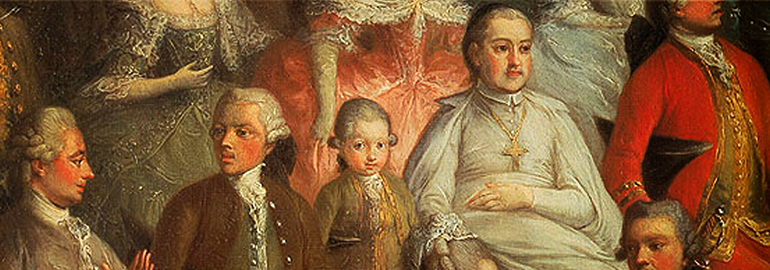
Despite the great success of Die Entführung aus dem Serail, Mozart did little writing of operas during the years that followed it, producing only two unfinished works and the one-act Der Schauspieldirektor. He focused instead on his career as a piano soloist and writer of concertos. However, around the end of 1785, Mozart reshifted his focus again: he ceased to write piano concertos on a regular basis, and began his famous operatic collaboration with the librettist Lorenzo da Ponte. 1786 saw the Vienna premiere of The Marriage of Figaro, which was quite successful in Vienna and even more so in a Prague production later the same year. The Prague success led to a commission for a second Mozart-Da Ponte opera, Don Giovanni, which premiered 1787 to acclaim in Prague and was also produced, with some success, in Vienna in 1788. Both operas are considered among Mozart's most important works and are mainstays of the operatic repertoire today; their musical complexity caused difficulty for both listeners and performers alike at their premieres.
In December 1787 Mozart finally obtained a steady post under aristocratic patronage. Emperor Joseph II appointed him as his "chamber composer", a post vacated the previous month when Gluck died. It was not a full-time job, however. It paid only 800 florins per year, and merely required Mozart to compose dances for the annual balls in the Redoutensaal. Mozart complained to Constanze that the pay was "too much for what I do, too little for what I could do." However, even this much proved important to Mozart later on when hard times arrived. Court records show that Joseph's intent was explicitly to help make sure that Mozart, whom he esteemed, did not leave Vienna to seek better prospects elsewhere.
Toward the end of the decade, Mozart's career declined. Around 1786 he had ceased to appear frequently in public concerts, and his income dropped. This was in general a difficult time for musicians in Vienna, since between 1788 and 1791 Austria was at war (see Austro-Turkish War (1788–1791)), and both the general level of prosperity and the ability of the aristocracy to support music had declined.
By mid 1788, Mozart and his family moved from central Vienna to cheaper lodgings in the suburb of Alsergrund. Mozart began to borrow money, most often from his friend and fellow Mason Michael Puchberg; "a dismal series of begging letters" (New Grove) survives. Maynard Solomon and others have suggested the Mozart suffered from depression at this time, and it seems his output rate sank somewhat (see Köchel-Verzeichnis). The major works of the period include the last three symphonies (1788: 39, 40, 41; it is not certain whether these were performed in Mozart's lifetime), and the last of the three Da Ponte operas, Cosi fan tutte, premiered 1790.
During this time Mozart made long journeys hoping to improve his fortunes: a visit in spring of 1789 to Leipzig, Dresden, and Berlin (see Mozart's Berlin journey), and a 1790 visit to Frankfurt, Mannheim, and other German cities. The trips produced only isolated success and did not solve Mozart's financial problems.
Mozart's last year was, until his final illness struck, one of great productivity and (in the view of biographer Maynard Solomon) personal recovery. During this time Mozart wrote a great deal of music, including some of the works for which he is most admired today: the opera The Magic Flute, the final piano concerto (K. 595 in B flat), the Clarinet Concerto K. 622, the last in his great series of string quintets (K. 614 in E flat), the revised version of his 40th Symphony, the motet Ave verum corpus K. 618, and the unfinished Requiem.
Mozart's financial situation, which in 1790 was the source of extreme anxiety to him, also began to improve. Although the evidence is uncertain it appears that admiring wealthy patrons in Hungary and in Amsterdam pledged annuities to Mozart, in return for the occasional composition. Mozart also probably made considerable money from the sale of dance music that wrote for his job as Imperial chamber composer. He ceased to borrow large sums from Puchberg and made a start on paying off his debts.
Lastly, Mozart experienced great satisfaction in the public success of some his works, notably The Magic Flute (performed many times even during the short period between its premiere and Mozart's death) and the Little Masonic Cantata K. 623, premiered November 15, 1791.
Final illness and death
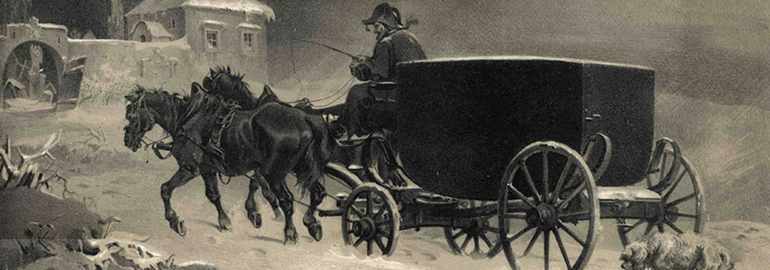
Mozart fell ill while in Prague, for the September 6 premiere of his opera La clemenza di Tito, written in 1791 on commission for the coronation festivities of the Emperor. He was able to continue his professional functions for some time, for instance conducting the premiere of The Magic Flute on September 30. The illness intensified on November 20, at which point Mozart became bedridden, suffering from swelling, pain, and vomiting.
Mozart was tended in his final illness by Constanze, her mother Cäcilia Weber, her youngest sister Sophie Haibel, and the family doctor, Thomas Franz Closset. There is evidence that he was mentally occupied with the task of finishing his Requiem (see Death of Wolfgang Amadeus Mozart). However, the evidence that he actually dictated passages to Süssmayr is very slim.
Mozart died at 1 in the morning on December 5. His burial arrangements were exceedingly simple: Mozart's body was sewn in a linen sack, and transferred from a reusable coffin to a common grave with five or six other bodies. No friends or family were present to witness the burial. These procedures reflected common practice at the time, traceable to a decree of Joseph II from 1784 governing funeral arrangements; see Josephinism. Maynard Solomon suggests that the simple funeral may have reflected Mozart's own wishes.
The cause of Mozart's death cannot be determined with certainty. His death record listed "hitziges Frieselfieber" ("severe miliary fever," referring to a rash that looks like millet seeds), a description that does not suffice to identify the cause as it would be diagnosed in modern medicine. Dozens of theories have been proposed, including trichinosis, influenza, mercury poisoning, and a rare kidney ailment. The practice of bleeding medical patients, common at that time, is also cited as a contributing cause. However, the most widely accepted version is that he died of acute rheumatic fever; he had had three or even four known attacks of it since his childhood, and this particular disease has a tendency to recur, leaving increasingly serious consequences each time, such as rampant infection and heart valve damage.
Mozart's extremely spare funeral did not reflect his standing with the public as a composer: memorial services and concerts in Vienna and Prague were well attended. Indeed, during the period following his death, Mozart's musical reputation rose substantially; Solomon describes an "unprecedented wave of enthusiasm" for his work. Biographies were written (initially by Schlichtegroll, Niemetschek, and Nissen), and publishers vied to produce complete editions of his works.
Mozart's physical appearance was described by tenor Michael Kelly, in his Reminiscences: "a remarkable small man, very thin and pale, with a profusion of fine, fair hair of which he was rather vain." His early biographer Niemetschek wrote, "there was nothing special about [his] physique ... He was small and his countenance, except for his large intense eyes, gave no signs of his genius." His facial complexion was pitted, a reminder of his childhood case of smallpox. He loved elegant clothing: Kelly remembered him at a rehearsal: he "was on the stage with his crimson pelisse and gold-laced cocked hat, giving the time of the music to the orchestra." Of his voice Constanze later wrote that it "was a tenor, rather soft in speaking and delicate in singing, but when anything excited him, or it became necessary to exert it, it was both powerful and energetic".
Mozart worked very hard, a great deal of the time, and finished works where necessary at a tremendous pace. When composing he often made sketches and drafts, though (unlike Beethoven's sketches) these are mostly not preserved, Constanze having destroyed them after his death.
Mozart also enjoyed billiards and liked dancing. He kept pets (a canary, a starling and a dog), and kept a horse for recreational riding.
Mozart lived at the center of Viennese musical life, and knew a great number of people, including not just his fellow musicians, but also theatrical performers, fellow transplanted Salzburgers, and many aristocrats, including a fairly close acquaintance with the Emperor, Joseph II. Mozart had a considerable number of friends, of whom Solomon estimates the three closest were Gottfried Janequin, Count August Hatzfeld, and Sigmund Barisani; others included the singers Franz Xaver Gerl and Benedikt Schack, Haydn (mentioned above), and the horn player Ignaz Leutgeb (with whom Mozart carried on a curious kind of friendly mockery, Leutgeb being always the butt of Mozart's practical jokes).
Particularly in his youth, Mozart had a striking fondness for scatological and sexual humor, which is preserved in his many surviving letters, notably those written to his cousin Anna Maria Thekla Mozart around 1777–1778, but also in his correspondence with his sister Nannerl. Mozart even wrote scatological music, the canons "Leck mich im Arsch" ("Lick me in the arse") K. 231 and "Leck mir den Arsch fein recht schön sauber" ("Lick me in the arse nice and clean") K. 233.
Mozart was influenced by the ideas of the eighteenth-century European Enlightenment as an adult, and became a Freemason in 1785. His lodge was specifically Catholic, rather than deistic, and he worked fervently and successfully to convert his father before the latter's death in 1787.[citation needed] Die Zauberflöte, his penultimate opera, includes Masonic themes and allegory.
Bill Overton 1am - 4am
Now Playing
Scottish Fantasy Opus 46 (4) Max Bruch Download 'Scottish Fantasy Opus 46 (4)' on iTunes
Wolfgang Amadeus Mozart (1756–1791)
Johannes Chrystostomus Wolfgangus Theophilus Mozart (1756–1791) was arguably the most gifted musician in the history of classical music. His inspiration is often described as 'divine', but he worked assiduously, not only to become the great composer he was, but also a conductor, virtuoso pianist, organist and violinist. Mozart's music embraces opera, symphony, concerto, chamber, choral, instrumental and vocal music, revealing an astonishing number of imperishable masterpieces.
Mozart was born in Salzburg, in 1756. Mozart's father, Leopold, was an ambitious composer and violinist. Though he was and still is considered a genius, he was also tactless, arrogant and had a scatological sense of humour. Mozart composed his first opera, Apollo et Hyacinthus when he was only 11. A year later the Emperor Joseph II commissioned him to write La finta semplice. In August 1782 he married Constanze Weber. The Mozarts' marriage seemed to be a happy one. Constanze was easy-going, free-spending and usually pregnant. Only two of their six children survived. Post-marriage, some of Mozart's best started to appear -the Haffner and Linz symphonies and five string quartets, for example. Between 1784 and 1786, he composed nine piano concertos and three of these concurrently with The Marriage of Figaro. The year 1787 saw the premiere of Mozart's second opera, Don Giovanni. Mozart had a great run of successes in his final years - Eine Kleine Nachtmusik and the Clarinet Quintet in A, three of his 41 symphonies; Cosí fan Tutte, three piano trios, the Coronation piano concerto, two piano sonatas and three string quartets. His health began to fail and his work rate slowed in 1790. He got better, though, and in 1791 alone composed the most famous The Magic Flute, the Requiem (unfinished), and the Clarinet Concerto. Mozart did not live long enough to complete his Requiem. He died in Vienna, in 1791, before his 36th birthday.

The Fast and Friendly Guide to Mozart
Top Mozart pieces
The magic flute: the queen of the night wolfgang amadeus mozart, ave verum corpus k.618 wolfgang amadeus mozart conductor: nigel short ensemble: tenebrae; chamber orchestra of europe record label: warner classics international catalogue id: 2564 601912, clarinet concerto in a major (2) wolfgang amadeus mozart (1756-1791 : austria) conductor: roy goodman ensemble: royal liverpool philharmonic orchestra soloists: nicholas cox record label: rlpo live catalogue id: classcd 1502, don giovanni - overture wolfgang amadeus mozart conductor: rinaldo alessandrini ensemble: norwegian national opera orchestra record label: naive catalogue id: op 30479, eine kleine nachtmusik (1) wolfgang amadeus mozart (1756-1791 : austria) conductor: anton steck ensemble: concerto cologne record label: archiv produktion, laudate dominum wolfgang amadeus mozart conductor: charles mackerras ensemble: orchestra of the age of enlightenment; apollo voices soloists: danielle de niese record label: decca catalogue id: 478 2417, piano concerto no.21 in c major (2) wolfgang amadeus mozart (1756-1791 : austria) conductor: claudio abbado ensemble: chamber orchestra of europe soloists: maria-joao pires record label: deutsche grammophon catalogue id: 4399412, requiem k.626 - lacrimosa wolfgang amadeus mozart conductor: edward higginbottom ensemble: choir of new college, oxford; orchestra of the age of enlightenment record label: novum catalogue id: ncr 1383, most shared mozart features, mozart symphonies: where to start, was mozart actually poisoned by salieri here’s the truth, was mozart’s sister actually the most talented musician in the family, ‘mozart dropped a new single’ – classical fans queue to hear newly discovered work in leipzig, ‘we didn’t know’ – the young musicians chosen for secret premiere of lost mozart work, 10 best pieces ever written for the harp.
Discover Music
When Maria João Pires learned the wrong piano concerto, but had a ‘miraculous’ recovery
In 2016, mozart outsold beyoncé and drake to become the most popular cd artist, five years ago, a young boy blurted out ‘wow’ after a concert and captured the world’s hearts, the 25 best pianists of all time, what classical music does francesca play on piano in bridgerton, mozart’s fiendish queen of the night aria – how on earth do you sing it this soprano explains..., new ‘amadeus’ tv series reveals mozart and salieri actors, classical music for studying: the 14 greatest pieces for brain power, ‘it was very scary’ – what went through maria joão pires’ mind in that viral wrong concerto.
Maria João Pires
The 10 most life-changing pieces of music by Mozart
Mozart latest.
See more Mozart latest
What is a symphony? We explain…
The 10 most romantic opera duets of all time, 10 heart-melting quotations from composers’ love letters, stephen mangan shares his favourite pieces of classical music, the 15 greatest pieces of classical music by mozart, listen to the first piece that mozart ever wrote… when he was five years old, the 15 greatest violin concertos of all time, ranked, 15 timeless pieces to begin your journey into classical music, best classical music.
See more Best classical music
The 15 most famous tunes in classical music
The 15 greatest symphonies of all time, the 4 eras of classical music: a quick guide, the 25 greatest conductors of all time, the 30 greatest classical music composers of all time, latest on classic fm, why does everyone cough so much at classical concerts, watch as a robot performs the cello with a symphony orchestra in a world first, classic fm’s pet classics returns in 2024 to relax pets during the fireworks, lisztomania: the wild phenomenon that gripped 19th-century crowds, classic fm live with viking: photos from our night of great british classics at the royal albert hall, 22-year-old pianist, who taught himself to play whilst in foster care, wins channel 4 show, did you know this controversial 20th century conductor inspired back to the future’s doc brown.
Leopold Stokowski
When 17-year-old Josh Groban stepped in for Andrea Bocelli to sing ‘The Prayer’ with Celine Dion
Andrea Bocelli
Classical music can effectively treat depression, breakthrough research finds
Choral composer eric whitacre: ‘if i could collab with any artist, it would be kendrick lamar’.
- This is Salzburg
- City of Mozart
- Wolfgang Amadeus Mozart
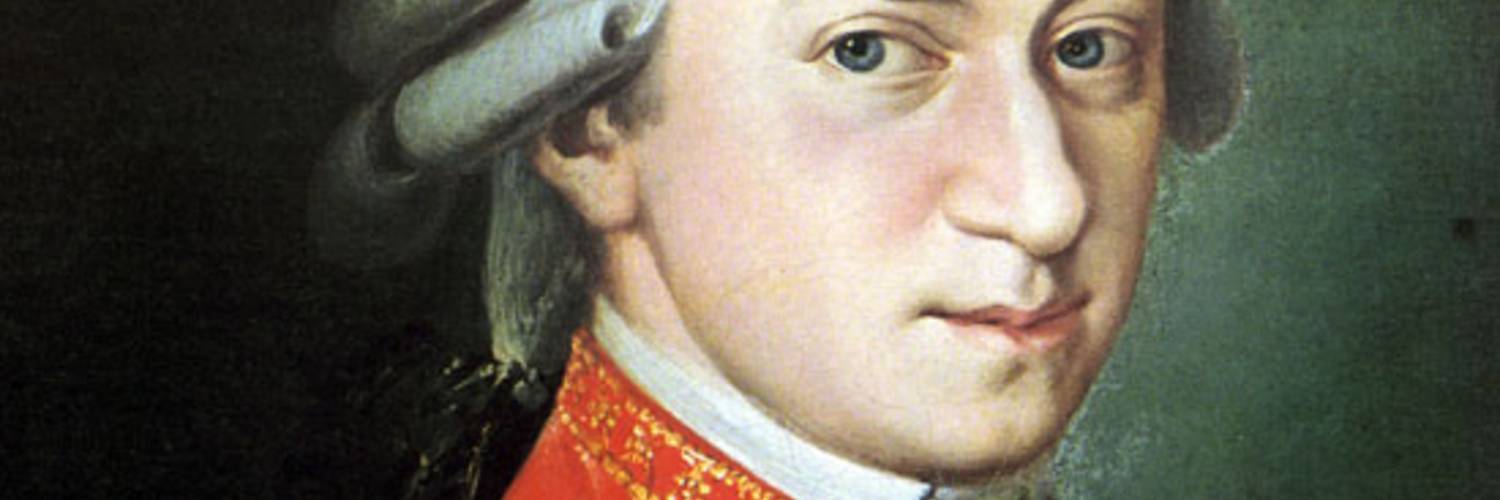
Wolfgang Amadeus Mozart – Biography in Brief
The life story of musical wunderkind Wolfgang Amadeus Mozart has its origins here in Salzburg. His parents, Leopold Mozart and Anna Maria Pertl, laid the foundation for his musical career. His early death at the age of just 35 shook everyone, but especially his sister “Nannerl”.
A wunderkind known as “Wolferl”
On 27 January 1756, Wolfgang Amadeus Mozart is born in the “Hagenauer Haus” (No. 9 Getreidegasse ) in Salzburg. Of their seven children in total, Leopold Mozart, musician to the court of the prince archbishop, and wife Anna Maria Walpurga have only one other who survives: Mozart’s elder sister Maria Anna, nicknamed “Nannerl”. Both of them are exceptionally gifted, one reason why the father puts his own career somewhat on the back burner.
The travels of young Mozart
Beginning in 1762, the ambitious father presents his talented children before princely courts across Europe. At the tender age of just six, little Mozart embarks on a long journey through Western Europe – from Germany, Belgium and France, all the way to London. He would continue to develop his musical skills in Italy.
The Salzburg Years
Mozart spends his youth as an honorary, and from 1772 as a salaried concert-master at the Salzburg court in the service of two Salzburg prince archbishops: Sigismund Graf Schrattenbach (reigned 1753-1771) and Hieronymus Graf Colloredo (reigned 1772-1803). The court musician works in the state rooms of the Residenz and the Cathedral . His fruitless search for a different appointment leads him to Italy, Vienna and Munich. In autumn 1773, the family moves into the house on Hannibalplatz, now known as the “Mozart Residence” whose address today is No. 8 Makartplatz.
Break with the Salzburg Archbishop
With Salzburg gaining a new ruler in 1772, Mozart is once again able to lead a more ordered life. Under Archbishop Hieronymus Graf Colloredo, in 1779 he reenters court service as an organist . However, after the premier of “Idomeneo” in Munich at the beginning of June 1781, Mozart falls out with the archbishop.
Move to Vienna and starting a family
In Vienna, he tries to make his way as a freelance performer, opera composer and teacher. On 4 August 1782, against the will of his father, he marries Constanze Weber. Together, the couple travel to Salzburg and Prague. Of their six children, only Karl Thomas and Franz Xaver Wolfgang survive beyond childhood.
Mozart’s Early Death
One of his last operatic successes is “La Clemenza di Tito” (K 621), the “Coronation Opera” first performed in Prague on 6 September 1791. Shortly after the premier pf “The Magic Flute” (K 620) at the Freihaustheater in Vienna, Mozart falls ill. He dies in Vienna on 5 December 1791 at the age of 35 from a “extreme miliary fever”. His “Requiem” (K 626) remains uncompleted.
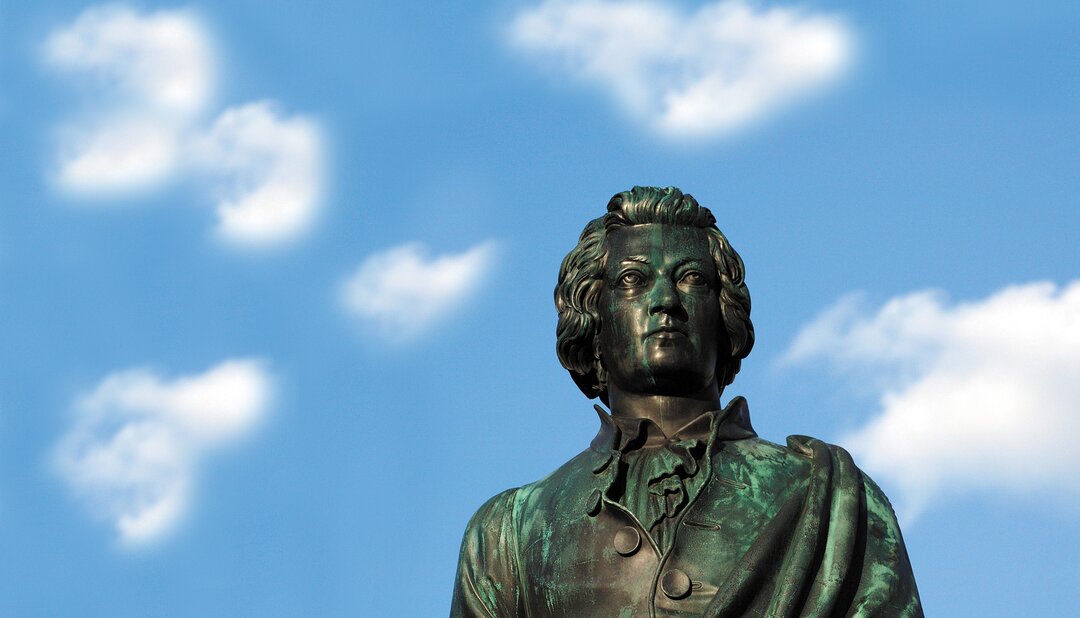
This might also interest you:
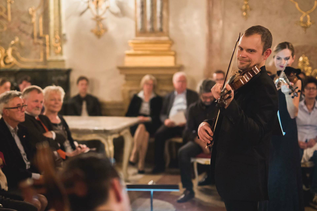
Mozart in the Marble Hall of Mirabell Palace
Enjoy finest chamber music and orchestra concerts with compositions of Mozart and his contemporaries.

Best of Mozart Concerts & Best of Mozart Dinner Concerts
Fortress Hohensalzburg: Culinary and musical delights high above the city's rooftops
Plan your visit
Here you will find your ideal accommodations, sightseeing tours of Salzburg, special events and tickets, along with all the benefits of the Salzburg Card.
Book guided city tours and excursions in and around Salzburg online:
The many-and-varied cultural events represent the heart & soul of Salzburg. Book your tickets right here:
- Advent/Christmas/New Year's
- Congresses / Fairs / Workshops
- Culture / customs / markets / festivals
- Exhibitions
- Guided tours
- Religious events
- Theatre / shows / dancing / films
The Salzburg Card provides you with free or discounted admission to numerous sightseeing attractions, along with free use of public transportation.
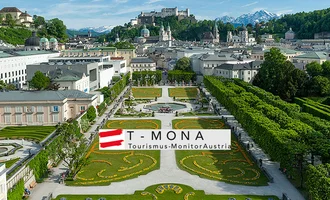
Wolfgang Amadeus Mozart was born on January 27, 1756, in Salzburg, Austria. His father, Leopold Mozart, a noted composer, instructor, and the author of famous writings on violin playing, was then in the service of the archbishop of Salzburg. Leopold and Anna Maria, his wife, stressed the importance of music to their children. Together with his sister, Nannerl, Wolfgang received such intensive musical training that by the age of six he was a budding composer and an accomplished keyboard performer. In 1762 Leopold presented his son as performer at the imperial court in Vienna, Austria, and from 1763 to 1766 he escorted both children on a continuous musical tour across Europe, which included long stays in Paris, France, and London, England, as well as visits to many other cities, with appearances before the French and English royal families.
Mozart was the most celebrated child prodigy (an unusually gifted child) of this time as a keyboard performer. He also made a great impression as a composer and improviser (one who arranges or creates). In London he won the admiration of musician Johann Christian Bach (1735–1782), and he was exposed from an early age to an unusual variety of musical styles and tastes across Europe.
From the age of ten to seventeen, Mozart's reputation as a composer grew to a degree of maturity equal to that of most older established musicians. He spent the years from 1766 to 1769 at Salzburg writing instrumental works and music for school dramas in German and Latin, and in 1768 he produced his first real operas: the German Singspiel (that is, with spoken dialogue) Bastien und Bastienne . Despite his growing reputation, Mozart found no suitable post open to him; and his father once more escorted Mozart, at age fourteen (1769), and set off for Italy to try to make his way as an opera composer.
In Italy, Mozart was well received: in Milan, Italy, he obtained a commission for an opera; in Rome he was made a member of an honorary knightly order by the Pope; and at Bologna, Italy, the Accademia Filarmonica awarded him membership despite a rule normally requiring candidates to be twenty years old. During these years of travel in Italy and returns to Salzburg between journeys, he produced his first large-scale settings of opera seria (that is, court opera on serious subjects): Mitridate (1770), Ascanio in Alba (1771), and Lucio Silla (1772), as well as his first string quartets. At Salzburg in late 1771 he renewed his writing of Symphonies (Nos. 14–21).
Paris was a vastly larger theater for Mozart's talents. His father urged him to go there, for "from Paris the fame of a man of great talent echoes through the whole world," he wrote his son. But after nine difficult months in Paris, from March 1778 to January 1779, Mozart returned once more to Salzburg, having been unable to secure a foothold and depressed by the entire experience, which had included the death of his mother in the midst of his stay in Paris. Unable to get hired for an opera, he wrote music to order in Paris, again mainly for wind instruments: the Sinfonia Concertante for four solo wind instruments and orchestra, the Concerto for flute and harp, other chamber music, and the ballet music Les Petits riens . In addition, he began giving lessons to make money.
Mozart's years in Vienna, from age twenty-five to his death at thirty-five, cover one of the greatest developments in a short span in the history of music. In these ten years Mozart's music grew rapidly beyond the realm of many of his contemporaries; it exhibited both ideas and methods of elaboration that few could follow, and to many the late Mozart seemed a difficult composer.
The major instrumental works of this period bring together all the fields of Mozart's earlier activity and some new ones: six symphonies, including the famous last three: no. 39 in E-flat Major, no. 40 in G Minor, and no. 41 in C Major (the Jupiter —a title unknown to Mozart). He finished these three works within six weeks during the summer of 1788, a remarkable feat even for him.
In the field of the string quarter Mozart produced two important groups of works that completely overshadowed any he had written before 1780: in 1785 he published the six Quartets (K. 387, 421, 428, 458, 464, and 465) and in 1786 added the single Hoffmeister Quartet (K. 499). In 1789 he wrote the last three Quartets (K. 575, 589, and 590), dedicated to King Frederick William (1688–1740) of Prussia, a noted cellist.
Mozart's development as an opera composer between 1781 and his death is even more remarkable, perhaps, since the problems of opera were more far-ranging than those of the larger instrumental forms and provided less adequate models. The first important result was the German Singspiel entitled Die Entführung aus dem Serail (1782; Abduction from the Seraglio ). Mozart then turned to Italian opera. Mozart produced his three greatest Italian operas: Le nozze di Figaro (1786; The Marriage of Figaro ), Don Giovanni (1787, for Prague), and Cosi fan tutte (1790). In his last opera, The Magic Flute (1791), Mozart turned back to German opera, and he produced a work combining many strands of popular theater and including musical expressions ranging from folk to opera.
On concluding The Magic Flute , Mozart turned to work on what was to be his last project, the Requiem . This Mass had been commissioned by a benefactor (financial supporter) said to have been unknown to Mozart, and he is supposed to have become obsessed with the belief that he was, in effect, writing it for himself. Ill and exhausted, he managed to finish the first two movements and sketches for several more, but the last three sections were entirely lacking when he died. It was completed by his pupil Franz Süssmayer after his death, which occurred in Vienna, Austria, on December 5, 1791.
Source: Encyclopedia of World Biography
New co-production with Lyric Opera of Kansas City
Hey Kids, Meet Wolfgang Amadeus Mozart | Composer Biography

Hey Kids, Meet Mozart
Wolfgang Amadeus Mozart (1756-1791) Austrian Classical Era Composer
Mozart was born in Salzburg, Austria - the home of castles, wiener schnitzel, and Mozartkugel - a chocolate candy created in 1890 to honor Wolfgang Amadeus Mozart.
Wolfgang was no ordinary kid. By the time he was four years old, he was composing short pieces that his father wrote down for him. By the time he was six, he and his sister Maria were touring Europe with their father to play music for kings and queens.
At the age of eight Wolfgang published his first two sonatas for the harpsichord . His skills as a composer continued to develop, and by the age of 13 he had composed his first opera. By the time Mozart was in his mid-twenties he had established himself as one of the most accomplished keyboard players in Vienna, and he was recognized as a talented composer.
Mozart loved to compose music. He composed music at the dinner table. He composed music about a cat - probably because he liked acting like a cat. He even composed music while his wife was having a baby. Because he was always composing, the music he wrote would take eight days to play if you played one piece after the next, without ever stopping.
One night a mysterious stranger knocked on the door of Mozart's home. Mozart opened the door and found a man standing in the shadowy hall that he had never seen before. The stranger asked Mozart to compose a requiem Mass, and offered to pay him. The visit from the mysterious man terrified Mozart, so he agreed to write the requiem.
Mozart's health wasn't good when he accepted the commission and it got worse as he worked on the requiem. He told his wife, Constanze, that he believed he was writing it for his own funeral.
On December 5, 1791, Mozart died at 35 years of age, leaving behind a collection of more than 600 compositions, including works for the symphony, the piano, and the opera. His most popular works include his opera, The Magic Flute , his chamber ensemble, Eine Kleine Nachtmusik , and his work for piano , Ah vous dirais-je, Maman* , based on the melody "Twinkle, Twinkle Little Star." These pieces and others are considered to be the finest works in the Classical style.
*Many believe that Mozart composed the theme for Ah vous dirais-je, Maman ("Twinkle, Twinkle Little Star") when he was 4 or 5 years of age, which is false. This misconception is further enhanced by its appearance in Trivial Pursuit and Snapple Facts as the "correct" answer.
Watch a Video About Wolfgang Amadeus Mozart
Learn about Wolfgang Amadeus Mozart with this popsicle stick theater presentation from the MakingMusicFun.net Academy. Print the Meet Mozart | Free Video Music Lesson Study Guide to drill the facts.
Watch a performance of Mozart's Eine Kleine Nacht Musik , 1st Movement for string orchestra.
Print Related Resources for Wolfgang Amadeus Mozart
Piano lesson books for kids.
Mozart | Meet the Composer Series Piano Book, Vol. 2
Beginner and Easy Piano Sheet Music
Für Elise Beginner Piano Sheet Music/Level 1 Marriage of Figaro Easy Piano Sheet Music/Level 2 Kyrie Eleison (Mass No. 12) Easy Piano Sheet Music/Level 2 Air Easy Piano Sheet Music/Level 2 Clarinet Concerto (Theme) Easy Piano Sheet Music/Level 2 Für Elise Easy Piano Sheet Music/Level 3 Requiem in D Minor: Dies Irae Easy Piano Sheet Music/Level 3 Eine Kleine Nachtmusik Easy Piano Sheet Music/Level 3 Minuet, K.2 Easy Piano Sheet Music/Level 3 Funeral March Easy Piano Sheet Music/Level 4 Ah, vous dirai-je, Maman (Twinkle, Twinkle Little Star) Easy Piano Sheet Music/Level 5 March of the Priests Easy Piano Sheet Music/Level 5 Old MacDonald Had a Farm à la Mozart Easy Piano Sheet Music/Level 5 Turkish March Easy Piano Sheet Music/Level 5 Symphony No. 25 (Theme) Easy Piano Sheet Music/Level 5 Symphony No. 40 (Theme) Easy Piano Sheet Music/Level 5
Beginner and Easy Woodwinds, Brass and Strings Sheet Music
Eine Kleine Nachtmusik Easy Flute Sheet Music with Piano Accompaniment Eine Kleine Nachtmusik for Easy Clarinet Sheet Music with Piano Accompaniment Eine Kleine Nachtmusik for Easy Alto Saxophone Sheet Music with Piano Accompaniment Eine Kleine Nachtmusik for Easy Trumpet Sheet Music with Piano Accompaniment Eine Kleine Nachtmusik for Easy Trombone Sheet Music with Piano Accompaniment Eine Kleine Nachtmusik for Easy Violin Sheet Music with Piano Accompaniment Eine Kleine Nachtmusik for Easy Viola Sheet Music with Piano Accompaniment Eine Kleine Nachtmusik for Easy Cello Sheet Music with Piano Accompaniment
Beginner and Easy Guitar Sheet Music
Eine Kleine Nachtmusik for Guitar Solo (Tab)
Harp Sheet Music
Marriage of Figaro Easy Harp Sheet Music
Hey Kids, Meet the Composer Worksheets and Games (Famous Composers)
Meet Mozart | Free Video Lesson Study Guide Mozart | Word Search Worksheet Mozart | Crossword Worksheet Mozart | Multiplication Connect-the-Dot Worksheet Mozart | Coloring Page Meet the Composer Job Application Worksheet Beethoven at Bat™ | Music Composer Board Game (Digital Print)
Homeschool Music Lesson Plans for Wolfgang Amadeus Mozart
Wolfgang Amadeus Mozart | Homeschool Music Lesson Plans
Kids Songs for Wolfgang Amadeus Mozart
Great Composer Farm | Easy Piano Sheet Music Great Composer Farm | Lead Sheet Great Composer Farm | Kids Song Lyrics

A Brief Biography of Mozart

{mosimage} Born in 1756, Wolfgang Amadeus Mozart was the second child in the family of Leopold Mozart of Salzburg, Austria. Like his older sister Marian he showed great musical talent beginning at a very young age. One day at age three, as his father concluded a piano lesson with his sister young Wolfgang walked over to the piano and began to play back the lessons that had just been taught to his older sibling. This event brought his father to begin active music instruction with Wolfgang, and within a year he was already an accomplished pianist. By age five he began to compose pieces of music for the piano , with his father writing down the notes as he played them. Eventually Wolfgang learned to write music notation and his writing flourished. One day he told his father that he was writing a concerto. After looking at the manuscript his father was quoted as saying, "It is a pity it can not be made use of. It is so difficult that no one could play it." His son replied, "It is a concerto, and must be studied till it can be played properly." Wolfgang then walked to the piano and played it.
Mozart's Life and Experiences Across Europe:
No biography of Mozart would be complete without speaking of the family's extensive travels throughout Europe. As is still the custom even in modern times, the prolific Mozart family traveled extensively throughout Austria, Germany, Italy, and England beginning in 1762 when Wolfgang was only six years old. A year later he was playing for Louis XV in Versailles where he played with young Marie Antoinette. In1764 they moved to London where Wolfgang met Johann Christian Bach and was inspired to write his first three symphonies, still only at age eight. In the coming years the family continued performing during three trips to Rome, Italy, and Milan , and later to Vienna again in 1773 where he met Joseph Haydn. A later trip took him to Paris where his mother took ill and passed away in July of 1778. In 1780 Mozart presented his first major Opera, Idomeneo , in Munich.
Attempting to Fill His Father's Shoes:
By 1779 much had changed in Wolfgang Amadeus Mozart's home town. His father, who had been Kappelmeister for the Archbishop of Salzburg had always hoped that Wolfgang would one day hold the post as he had. At this time in history musicians fiercely sought after court positions such as this as they promised a steady flow of income. Over the years, however the Archbishop of Leopold's time had been replaced by a different priest. This new Archbishop and Wolfgang did not get along, and in 1780 following an argument, Wolfgang resigned and was forcibly thrown out of the Archbishop's residence. This signaled the beginning of Mozart's financial decline. While his compositions during this period are some of his most admired, they did not secure financial success.
What Do We Know About The Death of Mozart?
In July of 1791, Mozart was hired to write a Requiem (a mass for the dead). At this time Mozart was deep in debt and had taken ill. In his feverous state some say that Mozart believed the man who commissioned the work was Death himself, and that the Requiem he was writing was to be his own. In the end, Wolfgang Amadeus Mozart never completed this Requiem. Speculation that Mozart had been murdered by a rival musician named Antonio Salieri has, over time, proven to be false. Wolfgang Amadeus Mozart, perhaps the most perfect musical mind ever to put quill to paper, died penniless and forgotten as a casualty of Rheumatic Fever and was buried in an unmarked grave on December 5 th , 1791. Despite his quiet demise, well over 600 of his works survive to this day.
References Used In This Biography of Mozart:
Note: The articles on this site may contain referral links to sites such as Amazon and other online retailers. The small amount of income received from these links has helped keep MusicEdMagic.com up and running for over ten years now. Thank you for your support!
Academia.edu no longer supports Internet Explorer.
To browse Academia.edu and the wider internet faster and more securely, please take a few seconds to upgrade your browser .
Enter the email address you signed up with and we'll email you a reset link.
- We're Hiring!
- Help Center

Download Free PDF
W.A. Mozart: His life and work - An annotated bibliography

Related papers
Journal of the American Musicological Society, 1978
Wolfgang Amadè Mozart is arguably the most gifted composer the world has ever known. The Romantics of the nineteenth century revered Mozart so highly that he took on almost a godlike status in their eyes. Some more recent biographers have attempted to demythologize Mozart to the point of emphasizing his so-called personality failings. Some of these more modern biographers have tried their hand at an amateur psychoanalysis of Mozart at the remove of two hundred years. This type of analysis often has been undertaken without a due consideration of social and historical realities, and without consulting the most reliable biographical source information. The misunderstanding of Mozart has been exacerbated by the popular fictional play Amadeus and the movie of the same name, which essentially portrays Mozart as a talented idiot. The present paper will attempt to shed new light on Mozart’s life and genius from an esoteric perspective, emphasizing his soul development. Methods employed will include esoteric astrology and rayology, as well as the use of insights from the work of the Tibetan master of the Ageless Wisdom, Djwhal Khul, hereafter referred to as D.K.
History & Theory, 1978
Review of the work of Joseph Levenson and the importance of historical memory in Chinese studies and beyond.
Traditional accounts of Mozart’s oeuvre have regarded the final decade of the composer’s life as a fallow period for the composition of sacred music, broken only by the production of two divergent large-scale works and a small motet. While a number of articles have challenged this picture through the redating of various fragments and copies, there has yet to be a comprehensive study that integrates these discussions with recent developments in the assessment of non-autograph sources. The present thesis attempts to provide a detailed re-evaluation of the place of sacred music in Mozart’s thinking during his residence in Vienna. A common explanation for Mozart’s apparent silence is the introduction in 1783 of a city-wide Gottesdienstordnung by the Emperor Joseph II, reducing the number of services at which instrumentally-accompanied sacred music could be performed. The severity of the restrictions has been exaggerated, and there is evidence to suggest that the provisions of the Gottesdienstordnung were ignored at prominent churches in Vienna, including St. Stephen’s Cathedral. In its scale and technical demands, the contemporary Mass in C minor, K. 427 is a telling indication of where Mozart’s aesthetic sensibilities lay. Mozart’s associations with the Hofkapelle and St. Stephen’s Cathedral are the most important examples of the composer’s interest in sacred music in Vienna. A number of previously inaccessible sources from both institutions provide new evidence on the origins of the “Coronation” Mass K. 317 and the context of Mozart’s petition to become adjunct Kapellmeister at the Cathedral in 1791. The early textural history of the Requiem K. 626 has been widely misunderstood, and the development of the work is reconsidered within the framework of the obsequies for Mozart held on 10 December 1791, an occasion at which part of the Requiem is said to have been performed. Newly uncovered documentary and musical sources provide evidence for the dissemination of Mozart’s sacred music during the composer’s lifetime, and suggest that Mozart may have been associated with St. Michael’s, the church where the composer’s obsequies were eventually held.
Encyclopedia of Language and Linguistics, Volume 13, Second Edition by Author Unknown
Śląskie Wiadomości Elektryczne , 2023
Europe et traduction, 1998
Mestrado em História, 2018
International Journal of Business Studies, 2021
Journal of Sports Sciences, 1998
The Interpreter, 2024
Proceedings of the 2nd International Conference on Smart and Innovative Agriculture (ICoSIA 2021)
International Bulletin of Mission Research, 2019
Midwifery, 2019
ELECTROPHORESIS, 2012
Hormones and Behavior, 2010
Czech Polar Reports, 2018
Philosophy. Journal of the Higher School of Economics, 2020
TripleC, 2023
Allergy, 2017
Zagazig university medical journal, 2015
Bulletin of the American Physical Society, 2012
Revista Brasileira de Educação
Related topics
- We're Hiring!
- Help Center
- Find new research papers in:
- Health Sciences
- Earth Sciences
- Cognitive Science
- Mathematics
- Computer Science
- Academia ©2024

IMAGES
VIDEO
COMMENTS
Death and Legacy. Mozart died on December 5, 1791, at age 35. The cause of death is uncertain, due to the limits of postmortem diagnosis. Officially, the record lists the cause as severe miliary ...
Wolfgang Amadeus Mozart (1756-91) was an Austrian composer. Mozart composed music in several genres, including opera and . His most famous compositions included the motet Exsultate, Jubilate, K 165 (1773), the operas The Marriage of Figaro (1786) and Don Giovanni (1787), and the (1788). In all, Mozart composed more than 600 pieces of music.
Mozart's first tour of Italy had been an outstanding success. France, to which he and his mother journeyed in September 1777, was an unmitigated disaster. Indeed, the summer of '78 in Paris proved to be one of the saddest in Mozart's short life. The young composer was forced to fend for himself when his mother died.
Wolfgang Amadeus Mozart (1756-1791) was an Austrian composer who wrote a wide range of works including piano concertos, string quartets, symphonies, operas, and sacred music.Regarded as one of or perhaps the greatest natural musical talent ever, Mozart died penniless, aged 35, and was buried in an unmarked grave, but his sophisticated, expressive, and joyful work continues to enchant today.
Short Biography of Mozart. Mozart was born in Salzburg to a musical family. From an early age, the young Mozart showed all the signs of a prodigious musical talent. By the age of five, he could read and write music, and he would entertain people with his talents on the keyboard. By the age of six, he was writing his first compositions, and by ...
Wolfgang Amadeus Mozart [a] [b] (27 January 1756 - 5 December 1791) was a prolific and influential composer of the Classical period.Despite his short life, his rapid pace of composition resulted in more than 800 works representing virtually every Western classical genre of his time. Many of these compositions are acknowledged as pinnacles of the symphonic, concertante, chamber, operatic, and ...
Family and early years. Wolfgang Amadeus Mozart was born to Leopold and Anna Maria Pertl Mozart in Getreidegasse 9 in the city of Salzburg, the capital of the sovereign Archbishopric of Salzburg, in what is now Austria, then part of the Holy Roman Empire. His only sibling who survived past birth was an older sister: Maria Anna, nicknamed Nannerl.
Wolfgang Amadeus Mozart (January 27, 1756 - December 5, 1791; pronounced MOHT-sart) was a composer, instrumentalist, and music teacher.His full baptised name was Johannes Chrysostomus Wolfgangus Theophilus Mozart. He was born in Salzburg (then a free archbishopric city within the Holy Roman Empire, now Austria). He was the youngest child of Leopold and Anna Maria Mozart.
Wolfgang Amadeus Mozart, orig. Johannes Chrysostomus Wolfgangus Theophilus Mozart, (born Jan. 27, 1756, Salzburg, Archbishopric of Salzburg—died Dec. 5, 1791, Vienna), Austrian composer.Son of the violinist and composer Leopold Mozart (1719-87), he was born the year of the publication of Leopold's best-selling treatise on violin playing.
Mozart's music embraces opera, symphony, concerto, chamber, choral, instrumental and vocal music, revealing an astonishing number of imperishable masterpieces. Mozart was born in Salzburg, in 1756. Mozart's father, Leopold, was an ambitious composer and violinist. Though he was and still is considered a genius, he was also tactless, arrogant ...
Wolfgang Amadeus Mozart was born on January 27, 1756, in Salzburg (now in Austria). At age 4 he began playing a keyboard instrument called a harpsichord. At age 5 he composed his own pieces. A year later his father began taking him and his sister to perform concerts throughout Europe. Mozart played the violin, organ, piano, and harpsichord.
A wunderkind known as "Wolferl". On 27 January 1756, Wolfgang Amadeus Mozart is born in the "Hagenauer Haus" (No. 9 Getreidegasse) in Salzburg. Of their seven children in total, Leopold Mozart, musician to the court of the prince archbishop, and wife Anna Maria Walpurga have only one other who survives: Mozart's elder sister Maria ...
Wolfgang (or Wolferl, as his family called him) was a child prodigy. He composed his first piece of music at age five; he had his first piece published when he was seven; and he wrote his first opera when he was twelve. By the time Wolfgang was 6, he was an excellent pianist and violinist. He and his sister Maria Anna (known as Nannerl ...
2. He Had a Photographic Memory for Music. While this never received definite confirmation, most people speculated that Mozart had an eidetic (or photographic) memory for music. This rumor started when he showed his ability to listen to a full-length classical piece once and then write it down perfectly.
Wolfgang Amadeus Mozart was born on January 27, 1756, in Salzburg, Austria. He was the eldest son of Leopold and Anna Maria Mozart. Wolfgang's sister, Nannerl, was born seven years after him. Wolfgang and Nannerl were very close, and they both loved music. Wolfgang began composing music when he was just five years old.
Sun, May 7. 2:30 p.m. Approximately three hours and 10 minutes including one 20-minute intermission. Wolfgang Amadeus Mozart was born on January 27, 1756, in Salzburg, Austria. His father, Leopold Mozart, a noted composer, instructor, and the author of famous writings on violin playing, was then in the service of the archbishop of Salzburg.
Born on January 27, 1756, in Salzburg (in present-day Austria), his family called him "Wolfgang" or more affectionately, "Wolfgangerl.". As. a grown man he would sign himself "Wolfgang Amadé Mozart" or just "Mozart.". Not much is known of Mozart's very early life. His father, Leopold Mozart, was one of Europe's leading ...
Wolfgang Amadeus Mozart (1756-1791) Austrian Classical Era Composer. Mozart was born in Salzburg, Austria - the home of castles, wiener schnitzel, and Mozartkugel - a chocolate candy created in 1890 to honor Wolfgang Amadeus Mozart. Wolfgang was no ordinary kid. By the time he was four years old, he was composing short pieces that his father ...
This document presents a brief biography of Mozart including his early childhood, travels, and demise in 1791. {mosimage} Born in 1756, Wolfgang Amadeus Mozart was the second child in the family of Leopold Mozart of Salzburg, Austria. Like his older sister Marian he showed great musical talent beginning at a very young age.
It considers all the aspects of Mozart (as a prodigy, as a working composers, as a family member etc). There is a short index and no bibliography. 1.14 Ottaway, Hugh. Mozart. 208 pp. Michigan: Wayne State University Press, Detroit 1980. First published in Lndon in 1979 by Orbis Publishing Limited. This book is a biography of Mozart.